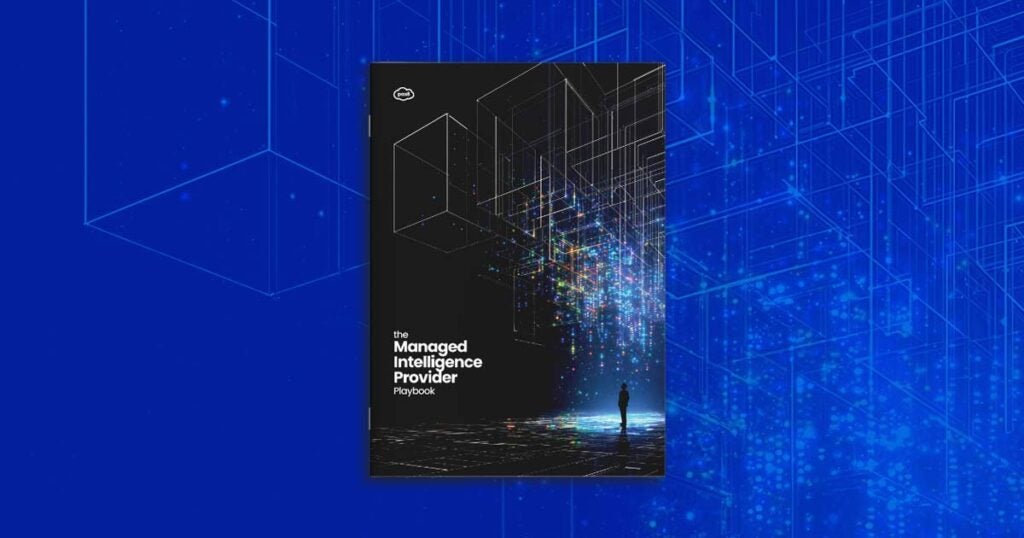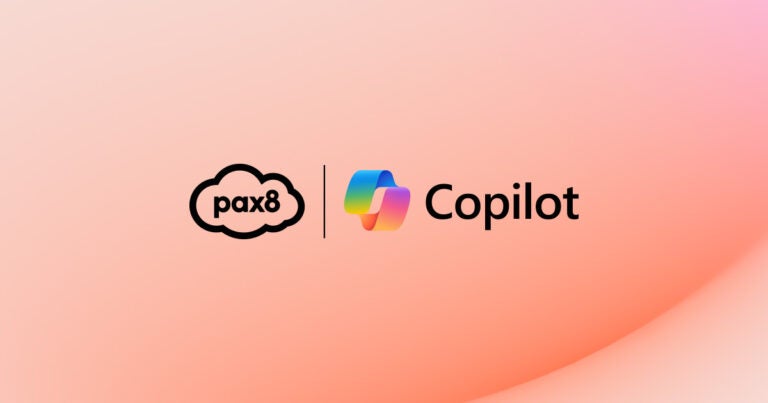Artificial intelligence (AI), automation and agentic systems are transforming how businesses operate. This means self-running businesses. It means autonomous services. And it means anyone with an idea can start a business in record time. This is the Agentic Inflection Point.
As AI and automation evolve from tools into intelligent teammates, a new kind of partner is emerging: the Managed Intelligence Provider (MIP).
What Is a Managed Intelligence Provider?
A Managed Intelligence Provider is a business partner who goes beyond infrastructure support and ticket resolution. MIPs deploy and manage intelligent systems with AI agents that reason, adapt and act in real time. They help clients orchestrate digital labor and automate workflows to unlock greater value from the AI tools we use every day.
Where MSPs had to often be reactive, responding to clients’ business challenges by deploying and managing products, MIPs get to be proactive. Instead of software, MIPs deploy intelligence and manage outcomes.
Why Now?
From enterprises to small and medium-sized businesses (SMBs), operations are reaching their limits. Organizations juggle dozens of apps that leave their employees feeling overwhelmed. And workers spend nearly a quarter of their time searching for information just to do their jobs.
In other words, we didn’t fix work. We fragmented it.
AI is helping organizations everywhere reclaim some of their lost time. For any MSPs taking a wait-and-see approach to AI generally, consider how much AI is already being used by the average company:
- 76% of small businesses are either actively using AI or exploring its use.
- 58% of SMBs using AI report saving over 20 hours per month, reinvesting that time into growth initiatives.
- And 66% of SMBs say AI saves their business between $500 and $2,000 monthly, often redirected toward marketing and infrastructure.
However, there’s still the orchestration issue. How can organizations use AI better while managing the tech sprawl that’s already plaguing us?
Agentic systems help change things. They help rip off the duct tape from makeshift workflows and shift us to orchestration mode. This is what we call the Agentic Inflection Point.
The Four Levels of Agentic Progression
To understand what MIPs manage, we need to understand agents. The agentic progression takes place across four levels:
- Chatbots – These are the ChatGPTs, the Copilots, those direct-input large language models (LLMs) that can simulate human conversation, answer questions and summarize meetings.
- Assistants – Assistants go one step further and can reason, plan and execute workflows end-to-end. For instance, Microsoft recently reported that 30% of its code is already written by these AI assistants.
- Agentic Labor – Imagine AI assistants that you don’t have to tell anything to, once they’re set up. That constitutes digital labor, which can operate independently, automating up to 90% of tasks.
- Agentic Workforce – This is the next leading edge. We’re talking about thousands of agents working together to solve problems, run businesses, execute ideas and realize dreams.
Already, organizations that use AI agents are reporting an estimated 20% to 40% in time savings and a 30% to 50% percent reduction in backlog. Imagine those numbers rising exponentially with multiple agents, working independently and together, and you have some idea of where things are heading. Now, how do you, as an organization’s trusted technology partner, make that happen?
Transformation: From Managing Tools to Managing Intelligence
Transformation is about changing what we manage and how we create value. For decades, MSPs have managed infrastructure, uptime and availability. But in the age of intelligent systems, those have become table stakes.
What clients now need are partners who can manage the intelligence itself; they’re looking for those who can connect automation, data and agentic labor into an orchestrated ecosystem. This is the essence of the Managed Intelligence Provider. It’s a shift from fixing problems to engineering possibilities, from delivering services to delivering outcomes. The five Plays of the MIP Playbook map this journey, giving partners a framework to evolve from reactive providers into proactive architects of transformation.
Becoming an MIP: The Five Plays
Play 1: Discover
Discover starts with a mindset shift. MIPs begin not with products, but with possibility. The goal of Discover is to help clients identify and eliminate process debt: the manual, fragmented, repetitive work that drains productivity.
You can think of Discover as a spectrum from manual to automated. On one end are the high-friction, time-consuming tasks that eat up valuable human capacity; on the other, the intelligent systems that can take over and scale that effort through automation and agentic labor.
In the MIP model, Discover mirrors the earliest phase of agentic evolution, when AI begins moving from answering questions to actually assisting with the work. MIPs guide clients through that same journey: mapping processes, exposing inefficiencies and revealing where digital labor can take over so human creativity and problem-solving can thrive.
Play 2: Sell
In the world of Managed Intelligence, clients are looking for results, not promises. MIPs move beyond seats and licenses to outcome-based billing models tied to agent performance, workflow completion or measurable ROI.
Pricing innovation is central here. MIPs design value metrics:
- Per agent
- Per action
- Per workflow
- Per outcome
To deliver proof in real time, you can take advantage of automation dashboards. Pilot programs validate value; performance data justifies scale.
However you bill it, your clients will want to see positive outcomes. To get past the hesitations around AI, you can:
- Design clear outcome triggers that auto-generate billable events
- Offer tiered bundles tied to value metrics
- Provide dashboards with real-time proof of results
- Run pilots that prove ROI and convert to long-term contracts
- Remember: Intelligence creates exponential efficiency. MIPs turn that efficiency into predictable, high-margin revenue, proving that automation both reduces costs and drives growth.
Play 3: Buy
Marketplaces are now the engines of the agentic economy. In this Play, MIPs help clients access and activate prebuilt AI agents, Copilots and digital services, curating the right mix of tools that fit each organization’s needs.
Here, MIPs can source and subscribe to autonomous workers, or agents, that execute repetitive processes with precision. The opportunity extends beyond procurement and progress towards orchestration. MIPs integrate these agents into their clients’ daily operations, aligning them with real-world outcomes and measurable impact.
This is where AI meets scale, where every new connection between agents and humans compounds efficiency and value.
Play 4: Build
Every business has something that makes it unique: its workflows, its data, its rhythm. That uniqueness is exactly why Build exists. No two clients operate the same way, and off-the-shelf tools can only take them so far.
The next horizon for MIPs is building proprietary intelligence — using low-code and no-code platforms to design agents and workflows tailored to each client’s specific needs and then reusing, refining and reselling that IP across their client base.
This Play turns MSPs into creators of agentic labor. Instead of deploying the same SaaS stack everyone else does, MIPs develop intelligent workflows that reason, learn and act. It’s a shift from provisioning software to engineering intelligence, and it’s where differentiation, margin and defensibility are born.
Every custom workflow becomes a potential revenue stream; every reusable agent, a piece of intellectual capital.
Play 5: Manage
Manage is where the continuous lifecycle partnership becomes tangible. MIPs oversee compliance, governance, optimization and continuous improvement, keeping every intelligent system secure and aligned with business goals.
MIPs monitor how digital labor performs, then retrain agents as context evolves. This ensures that human oversight stays in the loop.
In doing so, MIPs deliver the most critical value of all: trust. They become the stewards of responsible AI adoption, the connective tissue between innovation and assurance.
The Business Case for Becoming an MIP
Here’s the bottom line: Partners who don’t evolve will see their margins shrink. One survey showed more than a quarter of partners believe 76-100% of their revenue will come from AI technologies over the next four to five years. That’s because research has shown AI agents can help organizations:
- Automate 30–70% of repetitive workflows
- Reduce operational costs by up to 40%
- Improve productivity without expanding their workforce
- Gain a competitive advantage with faster decision-making and execution
And the market is ready. IDC estimates more than 50% of enterprise applications already include AI assistants or advisors, and 20% are supplemented with full AI agents. By 2028, agentic AI is expected to power 33% of enterprise software, enabling autonomous solutions for 15% of daily work decisions.
The Pax8 Agent Store: Your Launchpad
To support this transformation, Pax8 is launching the Agent Store in 2026. The Agent Store will be the first agent marketplace built specifically for the SMB economy. Here, MIPs can discover, deploy, bundle, build, manage and monetize agents — all in one place.
With launch partners like Microsoft, AWS, Grammarly, Shopify and ZoomInfo, the Agent Store is your ecosystem for intelligent execution.
You can:
- Turn agent services into recurring, outcome-based offerings
- Bundle AI and automation into industry-specific workflows
- Build repeatable IP for high-margin revenue streams
- Position yourself as the trusted AI advisor
Every revolution has its pioneers. And in this one, the first movers will define everything. Start now and embrace the future as an MIP.





